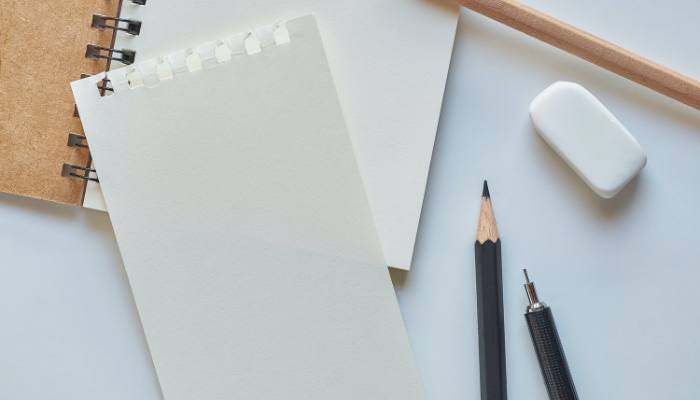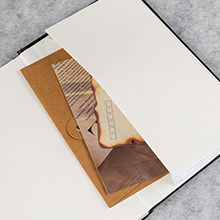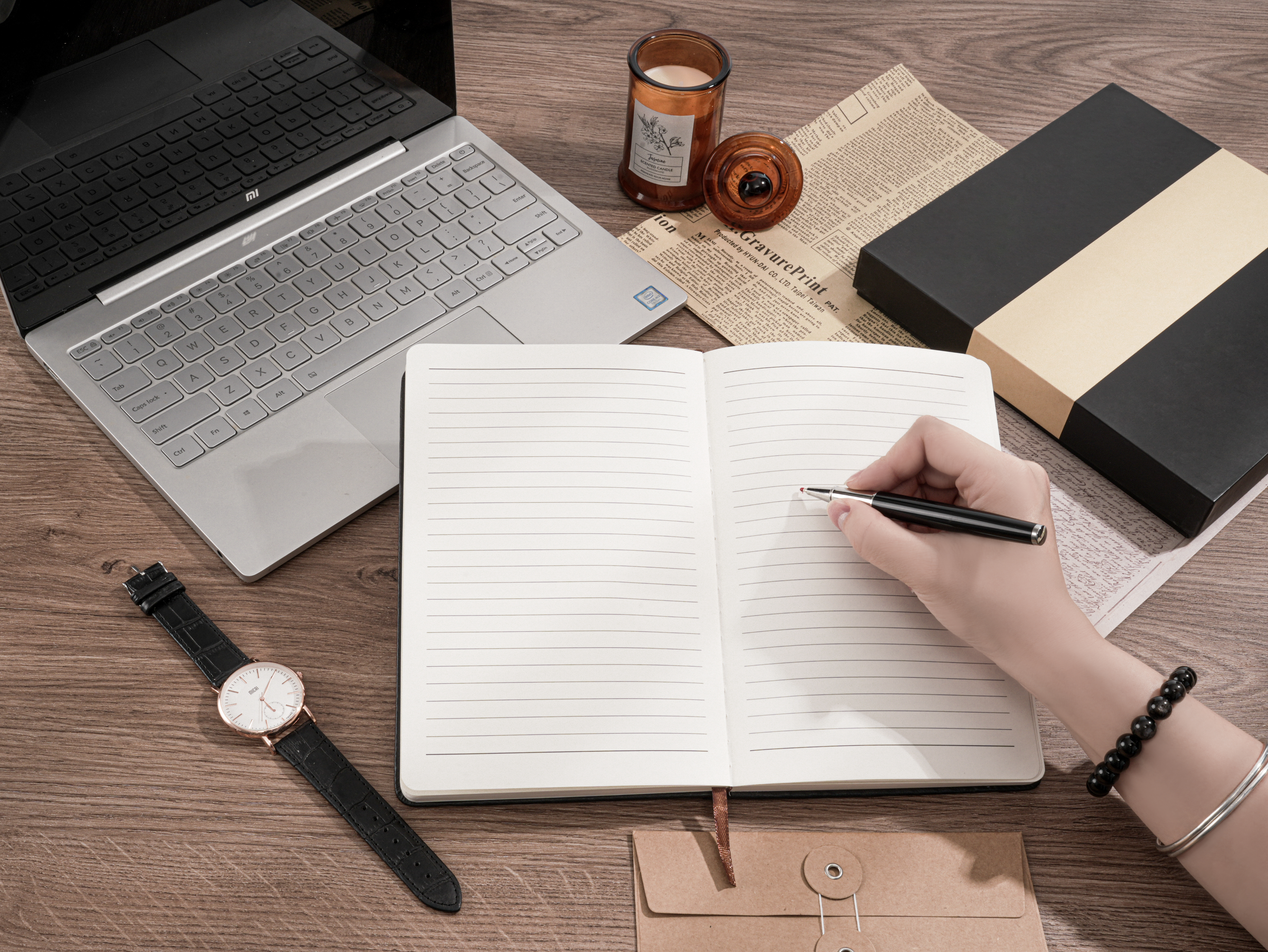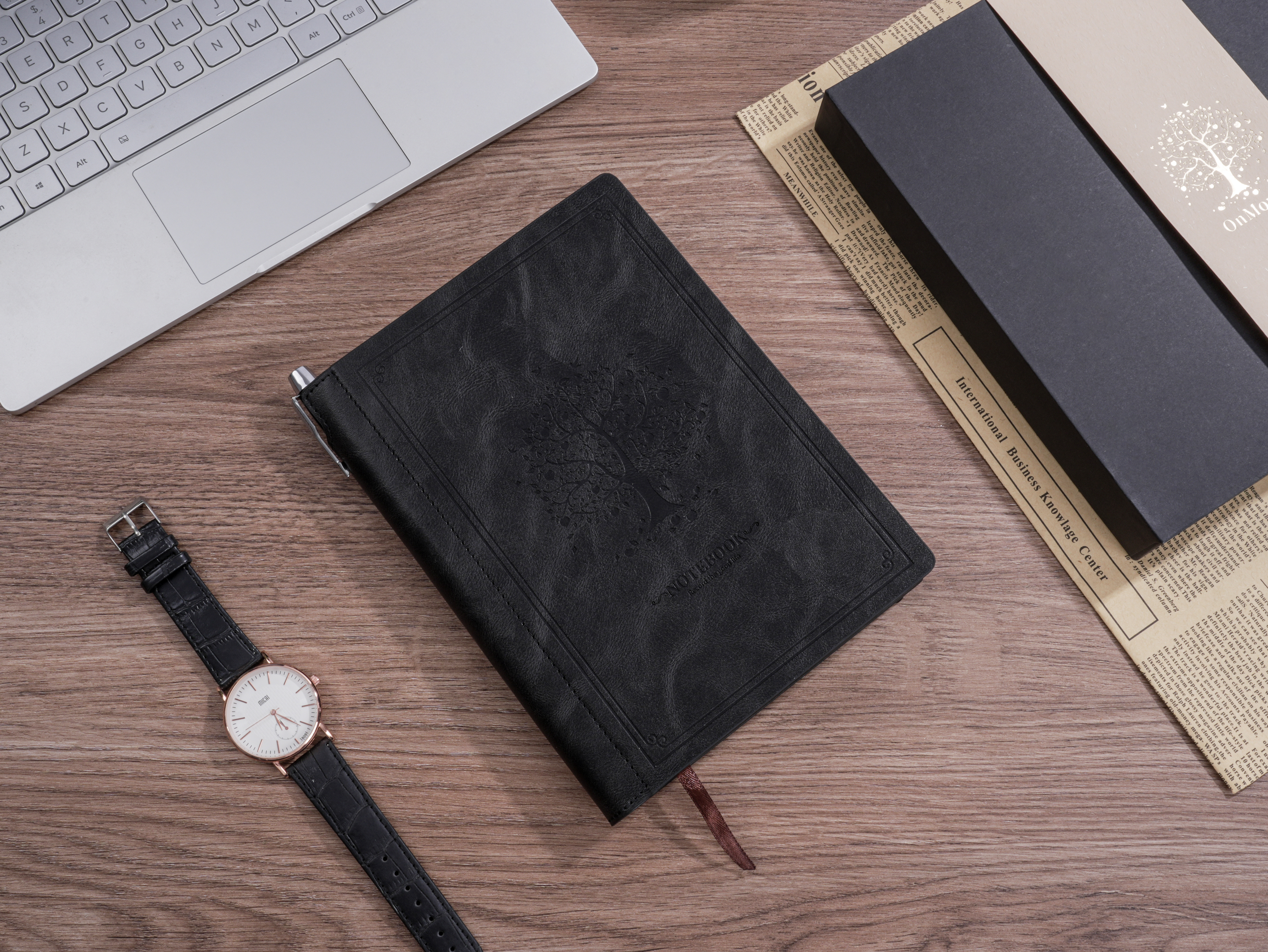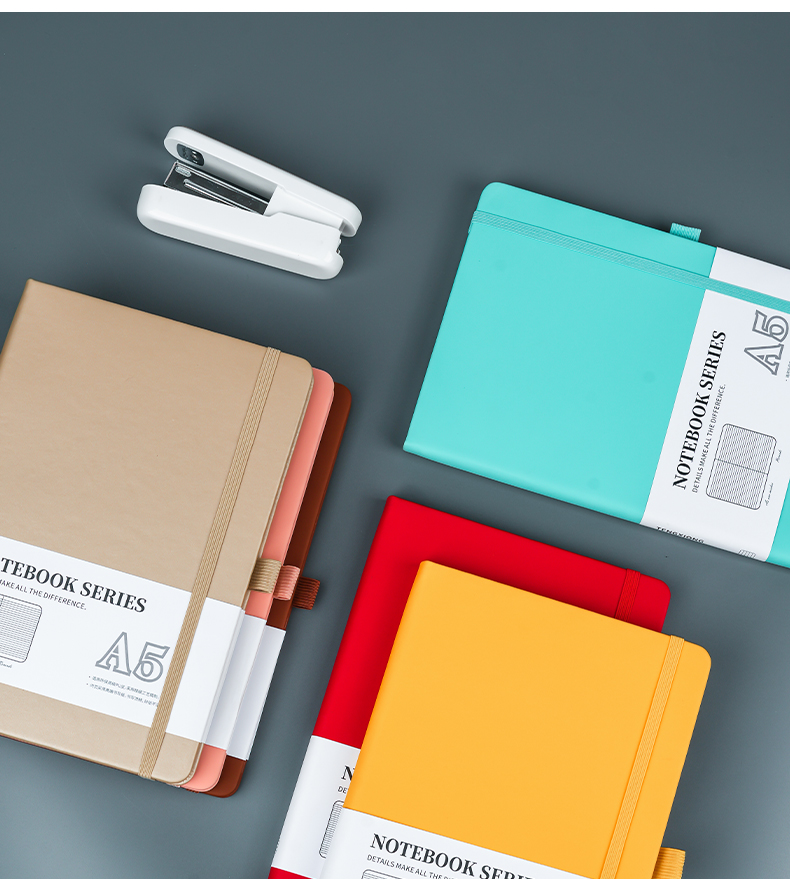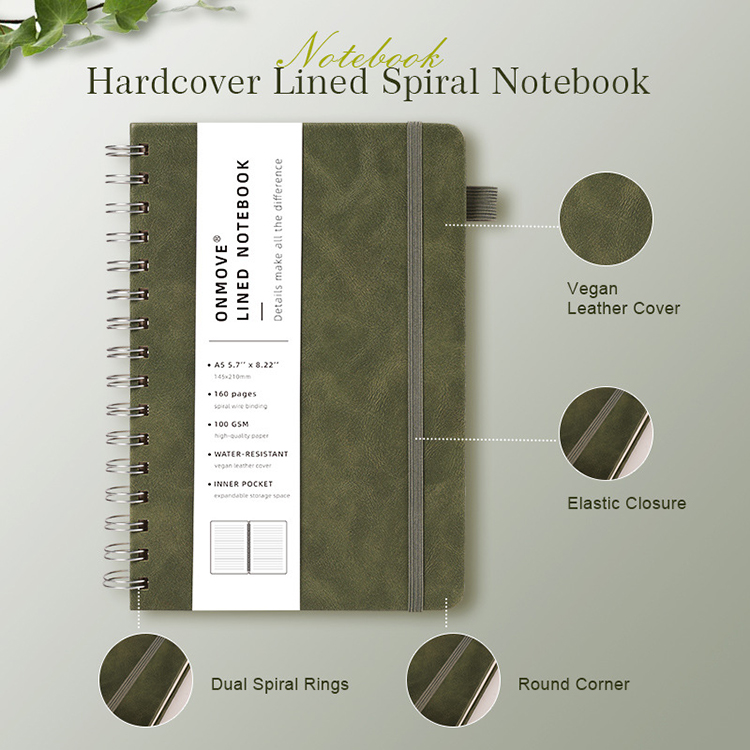Notepads vs. Diaries: Understanding Design, Layout, and Use Cases
Discover the essential differences between notepads and diaries, including their design, layout, and best use cases. Find out which writing tool fits your needs and lifestyle.
In a world increasingly driven by digital communication and tools, traditional writing methods such as notepads and diaries remain relevant and indispensable. Whether for personal reflection, creative brainstorming, or professional organization, both notepads and diaries offer unique benefits. Understanding the differences in design, layout, and use cases can help individuals select the most suitable tool for their needs.
Design Differences
Notepads
Notepads are characterized by their simplicity and portability. Generally available in various sizes, from pocket-sized to A4, notepads feature a minimalist design intended for ease of use. They are typically bound with spiral wire, glue, or staples, allowing for easy page removal or flipping. Covers are usually soft and functional, emphasizing lightweight and flexibility over durability.
The interior of a notepad is often plain, lined, or grid-based, offering an open canvas for users to adapt the space as needed. This simplicity is one of the defining design features that make notepads so versatile.
Diaries
In contrast, diaries are designed with structure and longevity in mind. They commonly feature hardcovers made from leather, faux leather, fabric, or other durable materials. Many include thoughtful design elements such as bookmarks, elastic bands, or even lockable clasps. These features enhance the aesthetic appeal and protect the contents over time.
The design of a diary often reflects its intended purpose: long-term use. Some are styled elegantly for personal journaling, while others are more professional and businesslike. The diary's form factor supports its function as a structured and permanent record keeper.
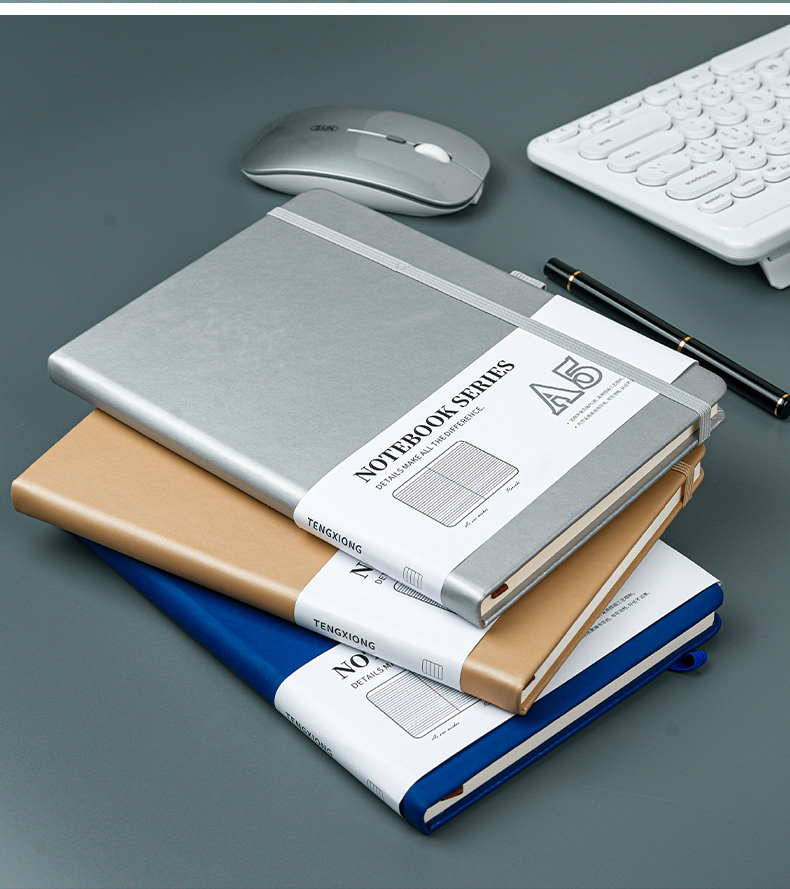
Layout Comparison
Notepads
The internal layout of notepads is intentionally unstructured. They are commonly filled with:
- Blank pages for sketches or free writing.
- Lined pages for structured notes or lists.
- Grid/dot-grid pages for diagrams or bullet journaling.
Because notepads are devoid of pre-imposed organization, users have the freedom to use them creatively. There are no dates, prompts, or predefined sections, making them ideal for tasks that require flexibility.
Diaries
Diaries, on the other hand, are structured to support chronological documentation. Most diaries include dated pages—daily, weekly, or monthly layouts—to help users track activities, thoughts, or events over time. This structure encourages consistency and makes it easier to review past entries.
Additional elements found in diaries may include:
- Calendars and year planners.
- Sections for goals, reflections, and important dates.
- Inspirational quotes or prompts to guide personal writing.
This predefined layout is particularly beneficial for users seeking to build habits, track progress, or reflect on their lives in a coherent manner.
Use Cases
Notepads
The utility of notepads lies in their adaptability. Their open format makes them suitable for a wide range of tasks, including:
- Note-taking during meetings, lectures, or research sessions.
- To-do lists and task management.
- Brainstorming for creative writing, business planning, or art.
- Doodling or sketching, especially in blank or dot-grid formats.
Notepads are commonly used by:
- Students, who need a quick way to capture lecture notes or solve problems.
- Designers and creatives, who benefit from an open canvas for spontaneous ideas.
- Professionals, who jot down key points during meetings or phone calls.
Diaries
Diaries are typically used for more introspective and goal-oriented activities. The structured layout supports activities such as:
- Daily journaling, recording events, thoughts, and feelings.
- Gratitude journaling, helping users cultivate a positive mindset.
- Goal setting and progress tracking, making them ideal for personal development.
- Memory keeping, for vacations, milestones, or life events.
Typical users of diaries include:
- Writers and creatives, who use them to reflect or develop story ideas.
- Self-improvement enthusiasts, aiming to track habits or emotional growth.
- Busy professionals or planners, who use dated pages to manage schedules and set personal or career goals.
Pros and Cons Summary
Here is a comparison of the strengths and limitations of each format:
| Feature | Notepads | Diaries |
|------------------|-------------------------------------|--------------------------------------|
| Design | Lightweight, minimalist | Durable, aesthetically rich |
| Layout | Unstructured, flexible | Structured, guided |
| Best For | Notes, sketches, spontaneous writing| Journaling, tracking, planning |
| Portability | Highly portable | Bulkier, less convenient for travel |
| Longevity | Disposable, short-term use | Archival, long-term use |
| Creativity | Unlimited by format | Guided, may feel restrictive |
| Ease of Use | Quick and intuitive | Requires discipline and consistency |
Choosing the Right Tool
Selecting between a notepad and a diary depends on several key factors:
1. What is your primary purpose?
- If you're looking to jot down quick notes or sketch ideas on the go, a notepad is ideal.
- If you want to build a habit of reflection, journaling, or goal-setting, a diary offers more support.
2. Do you prefer structure or freedom?
- Notepads offer flexibility and are free from constraints.
- Diaries provide a framework that can help instill routine and focus.
3. How often will you use it?
- Daily users may benefit from a diary’s consistency and layout.
- Infrequent users may find a notepad more convenient and less pressure-filled. 4. Where will you use it?
- On-the-go users may prefer the portability of a notepad.
- At-home or office users may appreciate the sturdiness and elegance of a diary.
Conclusion
While digital tools continue to shape modern productivity and creativity, analog formats like notepads and diaries remain invaluable. Notepads shine with their flexibility, simplicity, and ease of use—perfect for capturing fleeting ideas and organizing thoughts without constraints. Diaries, with their structured layouts and thoughtful designs, offer a deeper, more reflective writing experience suited to personal growth and long-term planning.
In the end, the choice between notepads and diaries is personal. Each serves distinct purposes, and many individuals find value in using both. By recognizing the strengths of each format, users can enrich their daily lives with tools that support creativity, clarity, and personal expression.
We're Here to Help
Have a question or need a quote? Fill out the form below and our team will get back to you promptly!
Tel:
+86 15258636961
Email:
1178948437@qq.com
Social Media:
YouTube:https://www.youtube.com/@Onmove-e8w
Tik Tok:https://www.tiktok.com/@onmove_notebook
Twitter:https://x.com/Onmove_notebook
Pinterest:https://ca.pinterest.com/onmove345/



